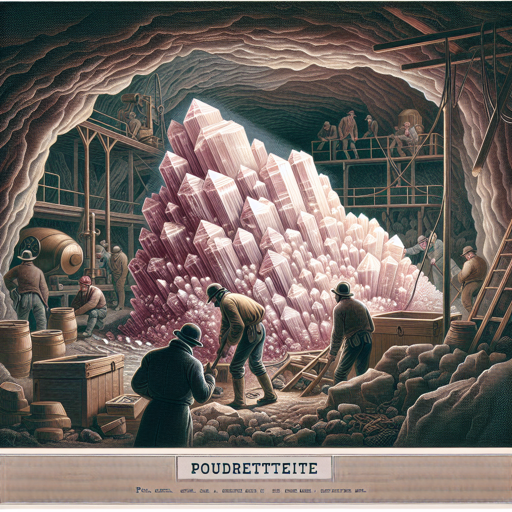Unveiling the Poudretteite: A Remarkable Gemstone Discovery
Embark on an intriguing journey of the discovery and characteristics of the rare and exquisite Poudretteite gemstone.

Introduction
When we talk about gemstones, we often think of widely recognized stones like diamonds, rubies, or sapphires. However, the realm of gemology and mineralogy is vast, with treasures scattered throughout, waiting to be discovered. One such precious find is the Poudretteite, a remarkably rare and beautiful gemstone that has earned its place in the mineral world’s hall of fame. This article will delve into the fascinating journey of the Poudretteite’s discovery and its unique characteristics that make it an object of desire for many gem enthusiasts.
The Discovery of Poudretteite
Poudretteite is named after the Poudrette family, who operated the quarry in Mont St. Hilaire, Quebec, where this gem was first discovered. In the mid-1960s, mineralogists at the quarry found crystals that they couldn’t identify. These crystals had a hexagonal structure and were pale pink to colorless. It wasn’t until 1986, two decades later, when the gem was finally recognized and named Poudretteite.
Characteristics of Poudretteite
Poudretteite is a borate mineral with an incredibly complex chemical formula of KNa2B3Si12O30. It is one of the few gemstones that contain boron, a characteristic that greatly contributes to its rarity.
| Chemical Composition | Appearance | Hardness | Rarity |
|---|---|---|---|
| KNa2B3Si12O30 | Pale pink to colorless | 5 on Mohs Scale | Extremely Rare |
The gemstone is often found in hexagonal prismatic crystals and exhibits a vitreous luster. Its hardness is relatively low, scoring a 5 on the Mohs scale, making it a delicate gem that requires careful handling. The most appealing characteristic is its color which ranges from colorless to a soft, rosy pink, a feature that adds to its distinctive allure.
“Poudretteite is a testament to nature’s capability of creating the rare and the beautiful, a true gemological marvel.” - Anonymous
Poudretteite’s Significance in the Gemological World
Given its extreme rarity and captivating beauty, Poudretteite holds significant value in the world of gemology. Its unique color, crystal structure, and composition make it an object of study for mineralogists and an object of desire for collectors and gem enthusiasts. Moreover, the gemstone’s discovery story, involving decades of study and exploration, further enhances its allure, symbolizing the relentless pursuit of knowledge and the untapped mysteries that our Earth holds.
The Largest Known Poudretteite
The largest known faceted Poudretteite is a 9.41 carat gem that was discovered in Burma in 2000. This gemstone is particularly special due to its intense pink color, a feature that is quite rare in Poudretteite. It currently resides in the Bowers Museum in Santa Ana, California.
For more detailed information about Poudretteite and other rare gemstones, visit the Gemological Institute of America website. This trusted resource offers a plethora of information about various minerals and gemstones.
Conclusion
The story of Poudretteite’s discovery serves as a reminder of the hidden gems that lie beneath the Earth’s surface, waiting to be uncovered. It’s a testament to the relentless curiosity and exploration spirit of mineralogists and geologists. The Poudretteite, with its unique characteristics and mesmerizing beauty, continues to enthral gem enthusiasts worldwide, asserting its position as one of the rarest and most desirable gemstones.